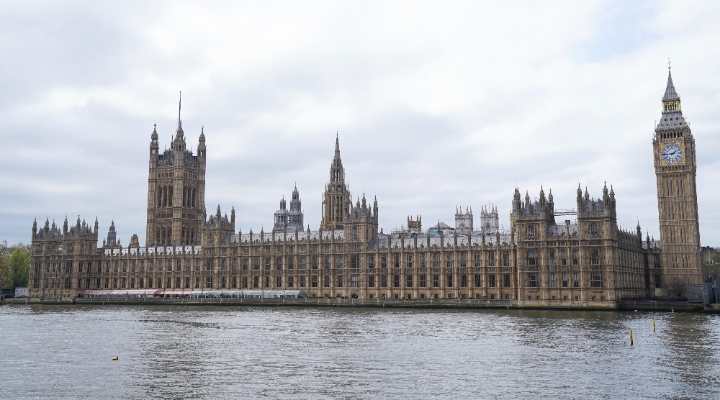
When will inflation start to fall? This is probably the most urgent question the UK economy faces in 2023, with consumers desperate for some good news after a prolonged period of price misery. Let’s look at how price rises actually work.
What’s the Background?
We’ve had double digit increases in the Consumer Price Index (CPI) since August 2022 and some categories like food have been posting some staggering increases. While energy prices appear to have peaked, there appears to be no obvious end in sight for food price inflation – this is particularly troubling because households tend to spend more on food than energy.
"The cost-of-living crisis is often thought of as a cost of energy crisis. That is an understandable, but increasingly inadequate, view", the Resolution Foundation said in a recent report. Still, energy prices are predicted to fall this summer by an average of £450, according to analysis firm Cornwall Insight.
What’s the Official Line?
The government has pledged to halve inflation by the end of this year and the Bank of England predicts the UK's inflation will fade to 8.2% in the second quarter, 3.4% in 2024 and 1.1% in 2025. (The forecasts were raised from 8.5%, 1.0% and 0.8%.)
Interest rates have been hiked from 0.10% to 4.5% to tackle inflation. A year ago I wrote an article called "When Will the Inflation Balloon Crash?" about the difficulty of using monetary policy tools to bring an end to what's now known as the cost-of-living crisis. For context, the Bank of England is now more concerned about food inflation than energy prices.
Is Inflation Political?
People who feel poorer tend to be unhappier with their lot and look for political solutions.
The "feelgood factor" is perhaps more important than ideology in voting intentions and, with a General Election anticipated next year (by 2025 at the latest), voter satisfaction matters.
The Mechanism
As with the inevitable march of time, price rises are a fact of life. We’d love to buy a house at 1970 prices or fill up our cars at 1990 petrol prices (50p a litre). Everyone can remember the price of a pint of beer, a stamp, pint of milk, being cheaper in the past.
For those who like to play financial time machines, I’d recommend the Bank of England’s inflation calculator, which can tell you what your house was worth in 1209. King John was on the throne that year and was excommunicated by Pope Innocent III.
This is a normal part of living in a market economy where prices respond to supply and demand. Things in high demand – holidays, electric cars, five-bedroom houses etc – tend to rise faster than average figures.
In theory, wages should track price rises – and that’s used as a part of pay negotiations with employers and unions have more leverage in this process than individuals (UK strikes this year over pay are a live issue).
House prices have outstripped pay increases over many years, making housing less affordable – and sowing the seeds for a long-developing supply crisis that governments have failed to solve. Given housing costs are the biggest part of an average person's take-home pay, this is a serious issue for a modern economy facing population increases and a longevity-related health bottleneck.
In a high inflation environment, wages rarely keep up with rising prices, so people buy fewer goods and services, putting a brake on the economy. They save less too because wage packets are smaller, meaning households are less financially resilient, and make smaller provision for their retirements. State benefits, which are not extravagant in the first place, also fall short (pensioners did get a 10% uplift in the state pension recently).
That's where rate rises come in. In theory, increasing interest rates makes saving in a bank account more attractive, placing further curbs on spending in the real economy and cooling demand – and therefore supply.
In an economic environment defined for some time by stagnating wages and increased poverty, some are concerned rate rises will have very little impact on people's willingness to save. And that's without banks' apparent reluctance to pass on rate rises to customers.
Do Prices Ever Go 'Backwards'?
Some things are cheaper in real terms than they were before (i.e. adjusted for inflation). But prices generally trend upwards. Take energy bills: while they may fall, they’re not going back to where they used to be even a few years ago.
Craig Lowrey, principal consulant at Cornwall Insight says while bills are falling, it does not expect them to return to pre-Covid-19 levels "before the end of the decade at the earliest".
"Regrettably, it looks as if these prices may become the new normal," Lowrey says. And we've all heard that phrase before.
The UN's food price index shows a similar patten starkly: the index was 67.4 in 2005 and hit 143.7 in 2022, a 113% increase. Apart from 2016, in the last 17 years the index hasn't been below 90. In an ideal world, wages would rise faster than prices, making you feel richer.
Indices vs Prices
When news anchors and trade union bosses talk of inflation being above 10%, what do they mean? This is the increase in the Consumer Price Index, a figure that represents a basket of commonly purchased goods. The index is represented in points and the inflation number is the difference in percentage terms from the same month a year ago.
In "normal" years, the reported monthly figure doesn’t usually have the power to shock as you expect this to be positive. Volatility is a key part of this dataset too – from the mid-1990s to the 2006 CPI was stable between 1-2% but there was a big spike just before the financial crisis to 5% and a very sudden fall to 1% as the credit crunch hit home.
Rather unhelpfully, there are multiple ways to report price inflation. The media reports CPI, but the Office for National Statistics prefers a number called “CPIH”, which is lower than CPI and includes housing costs.
There’s also the Retail Prices Index (RPI), which is no longer used as the official inflation figure (but is used to uprate rail fares every year.) The chart above shows that RPI has generally trended higher than CPI since the 1990s – the latest RPI number was over 14%.
CPI is not set in stone though, and it’s been altered over time. What does matter is that the Bank of England’s job is to target 2% CPI – and if it strays beyond this by a certain margin, the governor has to write to the Chancellor to explain. Needless to say, Andrew Bailey’s pen has run out of ink on a few occasions in the last year.
Can Inflation Be Zero or Even Negative?
Wouldn’t it be better if prices were falling and wages were rising?
The Bank of England illustrates the dangers of this deflationary environment by describing a bike shop that has to keep cutting prices – and ends up having to cut jobs. If you know this shop will drop prices next year, the rational thing would be to wait to get your bike cheaper.
Deflation is when prices are falling. It’s unlikely in modern economies but can happen. For a shortlived period in 2015, the UK saw price falls of 0.1% in April 2015 and October 2015. RPI fell by 1.4% in July 2009.
In Japan deflation has become an entrenched problem that authorities have thrown the proverbial kitchen sink at. So while policymakers and consumers would love some deflation this year, it’s not something that either would want to stick around.
If I Can’t Have Deflation What Can I Have?
What’s more likely is disinflation, a slightly unwieldy word that suggests a moderation in price rises. Economists prefer to see a sustained period of slowing price rises before calling it a trend, as happened between 2017 and 2020, when CPI fell from 3% to 0.1%. Note that prices weren’t falling in this period; they were just rising less fast.
We may now be in a stagflationary era, another clunky word to show low growth and high inflation.
Reacting to April 2023's inflation figures, Morningstar Investment Management's Mark Preskett said: “Thinking longer term, our fear is the very real risk of stagflation in the UK in which we see persistently high inflation alongside weaker growth and higher unemployment. We are starting to see signs that the higher interest rate environment is impacting mortgage delinquencies and rent arrears. The Bank of England needs to tread carefully not to tip the UK economy into a deep and long-lasting recession in its efforts to control inflation."
Isn’t Inflation Personal?
The 10% CPI number is a rough figure but it isn’t "one size fits all". The ONS "basket" is a rapidly-evolving collection of products that reflects changing consumer trends. But what you buy may be different from me – and expose you to higher or lower inflation rates than the official rate. You won't worry about the price of bikes increasing if you don't need one.
Is 10% Inflation Hyperinflation?
No. In some parts of the world, inflation is rampant. In Venezuela, political instability, a refugee crisis, and a run on the Bolivar have all contributed to an inflation rate of more than 400%. In Argentina it’s around 100% (prices are doubling every year). Closer to home, Turkey – whose elections are going down to a run-off this weekend – has inflation at 44%. We're not there quite yet, but there's no room for complacency.




























